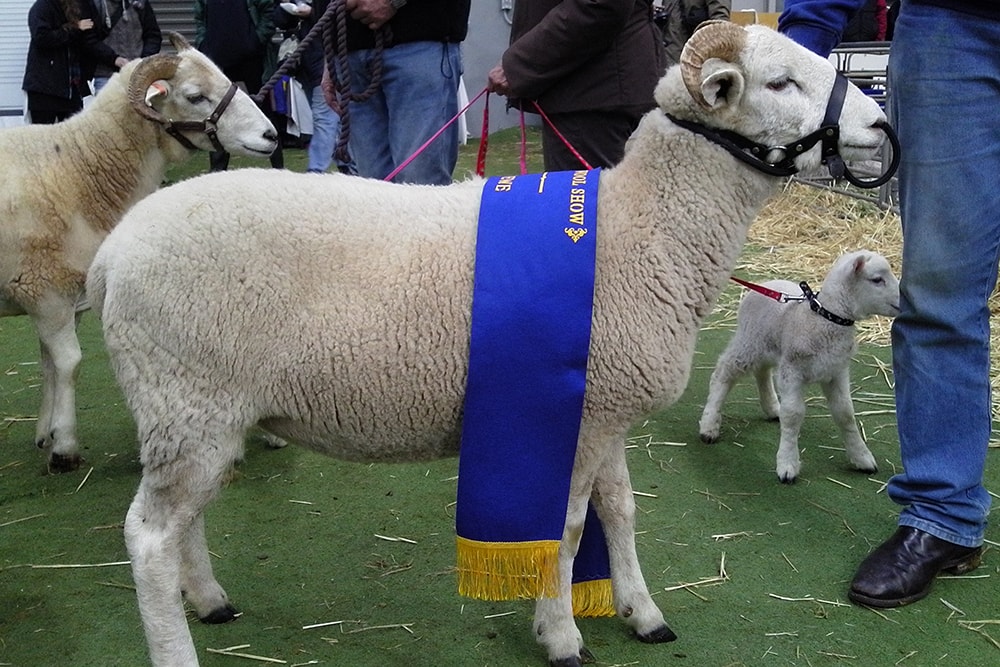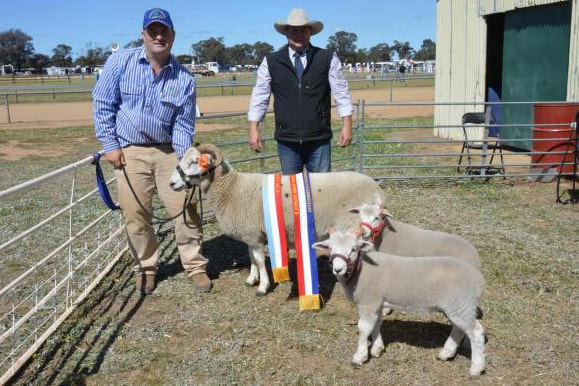Type & Appearance
Big framed, lean, well muscled, generally later maturing, horned shedding breed of meat sheep, whose purpose is to produce progeny for optimal prime lamb production, often with lambs more suited to export specifications. Both rams and ewes proud and stately with a certain grandeur of carriage. Rams over 100kg, ewes over 80kg.
Head Horns
Males and females horned. Horn falling back and outwards with uniform graceful curve clear of the head. In the males stronger horn with a second curve, the first part of the first curve should not be rubbing the neck behind the ears, and the inside point of the first curve should not be cutting the face. Ram horns that form a tight first circle obstructing the forward vision should also be penalised. Rams may not be shown with horns cut.
Face
Pure white in colour, usually with some black spotting, notably on the broad ears. Eyes big and bright and fearless. Nose ‘Roman’ in profile. Wide nostril with the flesh part of the nose preferably dark.
Teeth
Strong and set into a good strong lower jaw, free from any sign of weakness, and positioned for optimal bite.
Neck
Medium length. In rams wide at the poll and back of ears and gradually enlarging in all lines to a strong full junction at the shoulder as seen from the sides or the botttom. Ewe neck slimmer and more feminine.
Chest, Ribs & Shoulder
Deep chest with well filled brisket. Ribs well sprung with a full heart girth. Shoulders wide and oblique, should not rise above the level of the back in ewes, and not excessively above in rams.
Back & Loin
Back long and level, well covered with flesh, well-muscled rumps, and good depth of muscle between hind legs. Tail broad and well set up, cut or uncut. If tail is cut it is to have no less than two joints remaining.
Legs
Fore legs straight and wide apart with no wool. Hind legs full of meat to a well angled hock with good flat bone, with strong pasterns and sound feet with some black pigment. No wool below hock.
Skin & Wool
Skin pink, with a hairy coat, covered for part of year with short wool. Wool of no commercial value, and quality (ranges from fine to coarse) not assessed in show ring. Sheep over one year old shown in Summer to have no wool covering. In Spring sheep may have some wool but be in the process of shedding. In Autumn and Winter sheep have wool on chest, back and sides, but wool not present on belly, underside of chest, head, front legs, lower half of hind legs, or crutch. Sheep under one year may at any time have wool present but not excessive in length or coverage, and there must be some sign of shedding in the summer months. Wiltshires may not be exhibited for show competition subsequent to being shorn. Spotting permitted on head, body and legs, but not be excessive in either numbers or size of spots. Young sheep less spotted than older ones.






